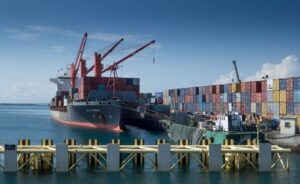On Sunday, Tanzania was plunged into an internet abyss. The culprit? Damage to a submarine cable nestled deep within the Indian Ocean had severed Tanzania’s connection to the web. This outage, impacting not just Tanzania but 11 other African nations, exposed a troubling truth: Tanzania’s internet infrastructure was a house of cards, precariously balanced on a single point of failure.
The cause of the disruption pointed towards a break in Seacom’s cable more than 100 kilometres off the coast of Mozambique. A maintenance ship has arrived on site and the estimated repair timeframe of a week or two leaves Tanzania in a precarious position.
This vulnerability stemmed from Tanzania’s overreliance on just two ageing submarine cable systems – Seacom and EASSY. Installed over a decade ago, these cables had fuelled a surge in internet usage, fostering a vibrant digital landscape. However, in February, the vital northern route suffered a devastating blow. A ship’s anchor, caught in the crosshairs of the Houthi conflict in Yemen, dragged three cables, severing this critical connection. With repairs on hold indefinitely, Tanzania’s internet security hinged solely on the southern route that ran through South Africa.
The impact of the outage was devastating. International traffic dropped by a staggering 70 percent. Traffic at the Tanzania Internet Exchange Point (TIX) plummeted by 50 percent. This crippled banks, businesses, and essential services that relied on a seamless internet connection. Countless digital transactions were left in limbo. Billions of shillings were lost, highlighting the stark reality – internet access is no longer a luxury, but the very backbone of a functioning economy, a national security imperative.
Beyond the immediate crisis, the outage exposed deeper cracks in the foundation of Tanzania’s internet ecosystem. While the nation boasted two cable systems, the outage suggested a troubling reality – a single point of failure. Service providers claimed redundancy, a safety net designed to ensure uninterrupted service in case of emergencies. However, the simultaneous collapse of both systems during the outage raised serious questions. Were these systems truly independent, or was one piggybacking on the other, creating a false sense of security?
Similarly, Tanzania’s reliance on just two cables proved insufficient. Kenya, a regional leader in internet infrastructure, has weathered the storm far better thanks to its foresighted investment in a third cable, TEAMS. This redundancy plan allowed Kenya to reroute traffic seamlessly, minimising disruption. Tanzania urgently needed to diversify its internet gateways, exploring options like connecting to Zambia’s terrestrial links.
But, alas, despite Tanzania and Zambia having their links at a shared POP (point of presence) in Tunduma, with only a 10-metre patch cord being capable of preventing the disruption we have observed, the link has not been established for years. Exorbitant cross-connection charges levied by NICTBB are to blame here. These high fees disincentivise crucial terrestrial connections, hindering the development of a more resilient infrastructure. NICTBB’s business model is shortsighted in many ways.
The outage also revealed a disturbing trend – widespread non-compliance with regulations. Regulations mandated keeping local traffic local. However, the outage exposed a stark reality – banks, MNOs, and other organisations were routinely routing domestic traffic through international routes. Institutions such as TRA which use TIX fared much better in this experience – with their services remaining uninterrupted. A focus on local content hosting is essential in building a secure and efficient internet infrastructure.
Technical limitations within Tanzania’s network engineering corps also came to light during the outage. The inability to configure systems for BGP, a critical routing protocol, hampered effective rerouting during the crisis. BGP is the language of the internet, directing data packets across vast networks. A lack of expertise in this vital area left Tanzania vulnerable when the unexpected occurred. Many systems were proved to be misconfigured, leaving users stranded in the digital abyss.
Similarly, the outage in Tanzania exposed a critical vulnerability: failure to develop the local internet. Many of us still think of the internet as something that is out there – while the internet can very well mean much of what we use locally. For example, the decision of tech giants such as Google, Facebook, and Microsoft to establish local data warehouses (caches) within Tanzania was instrumental in keeping those services running smoothly. This experience highlights a clear need: Tanzania must do more to build its local internet, including by incentivising global service providers to establish servers within its borders.
Finally, the outage served as a stark reminder of another missed opportunity – the dormant plan for a pan-African terrestrial broadband network. Regional cooperation was vital to ensure robust internet infrastructure across the continent. By working together, African nations could create a web of interconnected terrestrial links, reducing reliance on undersea cables and fostering better business connections among themselves.
This internet outage exposed critical shortcomings. Despite surging internet use, Tanzania clings to outdated practices. This is no longer acceptable. Broadband is now a national security issue and we can’t afford complacency. The world is a dangerous place – if we continue to play games with serious matters, one day the country will pay a very heavy price indeed.















